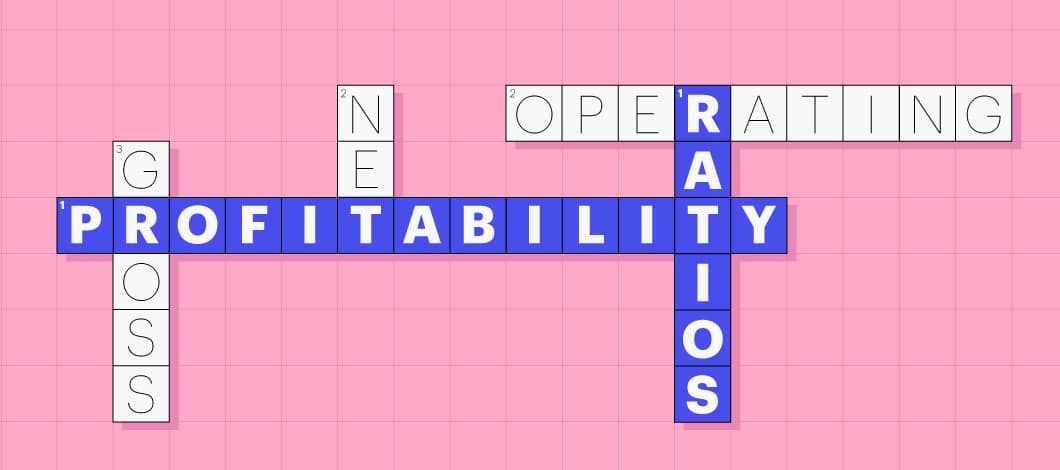Profitability ratios are financial measurements that tell you crucial information about how your business is performing. There are actually several different types of profitability ratios that show you different things about the state of your business finances. Knowing the profitability ratio definition for each of these types of measurements can help you manage your company’s finances. Here’s what you need to know about how to define profitability ratio, what the different types of ratios are and how you can use them to grow your business, gain a competitive edge and attract investors.
What Is a Profitability Ratio?
A profitability ratio is a key performance indicator (KPI) that measures the financial performance of your business in terms of profit. For this reason, financial ratios are also sometimes referred to as performance ratios.
Profitability ratios form just one category of what accountants, financial analysts and investors refer to as financial ratios or accounting ratios. Other types of financial ratios measure variables such as:
- How much cash your company has available to pay its immediate debts (liquidity ratios)
- Your company’s ability to repay your long-term debt (leverage ratios)
- How efficiently your company uses financial resources (activity ratios)
- How much your company’s shares are earning (valuation ratios)

What Are the Different Types of Profitability Ratios?
This profitability ratio definition gives you a general idea of what the ratio is; but to do a profitability ratios analysis, you need to know the different types of ratios and the specific equations used to calculate them. There are 2 main subcategories of profitability ratios:
- Margin ratios, which measure your company’s ability to transform raw sales revenue into profits
- Return ratios, which measure your company’s ability to generate returns for investors
To develop these distinctions into a practical profitability ratios definition that can be put to actual use, let’s first look at margin ratios. There are many different ways to measure margins, including the following widely used profitability measures:
Gross Profit Margin
Your gross profit margin (GPM) measures your profitability in terms of how much profit you retain from your net sales after covering the cost of goods and services sold (COGS). It tells you how well you’re controlling the cost of your operations and inventory.
Gross profit margin is calculated by taking your gross profit (the profit you make after deducting the costs of producing and selling your products and services) and dividing it by your net sales (your gross sales minus returns, allowances and discounts). You can get your gross profit margin and your net sales from your income statement (also known as your profit and loss—or P&L-—statement).
Gross Profit / Net Sales = Gross Profit Margin
The higher your gross profit margin, the more efficient you are at turning a profit and covering costs. On the other hand, the lower this margin, the higher your cost of goods and services sold, which can reflect factors such as low sales volume, low pricing of your products or high payments to suppliers.
Operating Profit Margin
The operating profit margin ratio (OPM) measures your earnings before repaying business loans and paying taxes as a percentage of sales. This measures the efficiency of your operations at generating revenue before paying non-operating expenses such as interest and taxes.
To calculate it, divide your earnings before interest and taxes (EBIT) by your net sales. You can get these figures from your income statement.
EBIT / Net Sales = Operating Profit Margin
The higher your operating profit margin, the less of your profit is going to cover operating expenses, while a low margin means you’re spending more money on operations.
Net Profit Margin
The net profit margin (NPM) measures how much of your net sales you retain as income after all expenses are paid, including both operating and non-operating costs. To calculate it, divide your net income (your income after paying all operating, interest, tax and other expenses) by your net sales.
Net Income / Net Sales = Net Profit Margin
You can get these figures from your income statement. A high net profit margin means more of your sales are left over for profit after covering all your expenses, while a low margin means that you have less profit on your bottom line.
Of these 3 ratios, net profit margin is most frequently used when doing a simple profitability analysis.

Common Return Ratios
In addition to margin ratios, there are return ratios that measure how well your business generates returns for investors. Where margin ratios are generated from your income statements, return ratios also make use of information generated from your balance statements. Two return ratios are especially important and widely used:
Return on Assets
The return on assets (ROA) ratio compares your net income with your total assets. It measures how efficiently you are converting your assets, including debt from loans and equity from investors, into profits. To calculate it, you take your net income from your income statement and divide it by your total assets from your balance sheet.
Net Income / Total Assets = Return on Assets Ratio
The higher your return on assets, the better you are using those assets—including loans and equity—to generate sales, while a lower number indicates that your assets are not being transformed into sales efficiently.
Return on Equity (ROE)
This ratio compares your net income with the amount of equity stockholders have invested in your company. It measures the return in profits that is being generated from stockholder investments.
To calculate it, divide the net income from your income statement by your stockholders’ equity from your balance statement. The higher the ratio, the better use you are making of investors’ money, while a low ratio indicates their investments are not being used efficiently.
Net Income / Stockholders’ Equity = Return on Equity Ratio
Return on equity is the most important financial ratio to stockholders because it tells them how much profit your company has available to distribute to them.
How to Leverage Profitability Ratios for a Business Advantage
There a few major ways you can apply profitability ratios to help build your business, gain an advantage on your competitors and attract investors, such as:
- You can track your margin ratios over time to identify places where you could improve the efficiency of your profit generation. For instance, a low gross profit margin might draw your attention to a need to increase your sales activity, raise your prices or cut your logistics costs.
- You can compare your margin ratios with some companies in your industry or with your industry as a whole, allowing you to see where you could improve to be more competitive. For instance, if you find you’re spending more on your operations than your competitors, or you’re paying about the same as your competitors, you might be able to gain an advantage by upgrading your software or using an outsourcing strategy to cut costs.
- You can use good returns ratios to attract investors. Alternately, if you have poor returns ratios, you might seek to improve your margins ratios to make your company more appealing to investors.
The most efficient way to track and apply profitability ratios is to use a cloud-based app that syncs your accounting data with a dashboard displaying your ratios as KPIs. Your accounting provider and IT team can assist you in setting up automated tracking of your profitability ratios.










